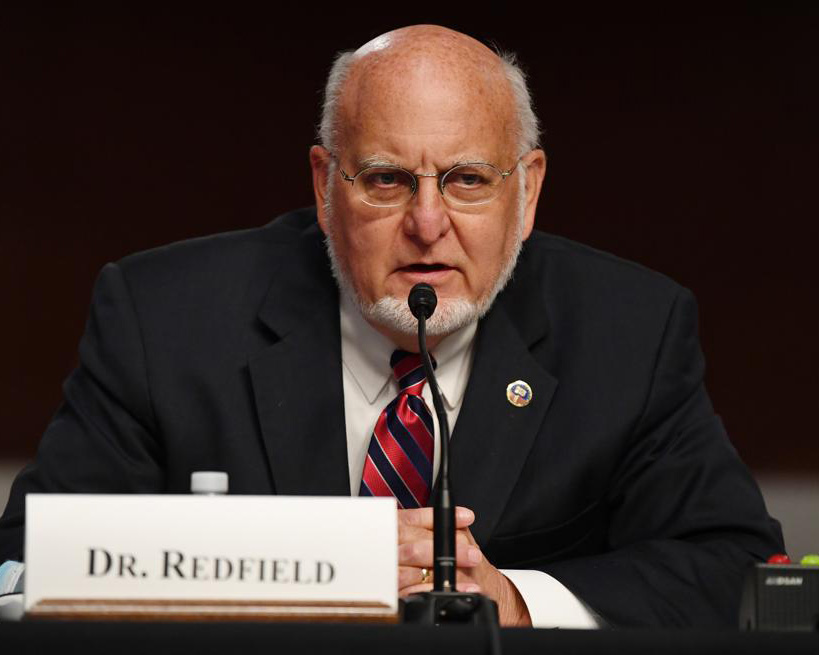
Peter Zeihan: The Russian Breakdown
Should the war in Ukraine result in a Russian loss, what will the future hold for Russia? Well, we know the road ahead for the…
Thought Leader: Peter Zeihan

CDC Director Dr. Robert Redfield is calling on CEOs across the country to have a flu vaccine program for their employees in place for September and October, and he says it is the innovation in the private sector — not the government — that gives him confidence that the country will find a Covid-19 vaccine in the near term.
The top official at the Centers for Disease Control and Prevention, the federal government’s public health institute, made those statements and offered other direct advice for U.S. corporate leaders contending with Covid-19 last week when I interviewed him for The CEO Show. The CDC’s job, he said, is to “keep America safe 24/7 using science and data, and to translate that into meaningful public health action and policy.”
“We want people to really encourage embracing the flu vaccine with confidence this year,” Redfield said, “because in November, December, January we’re going to have Covid again, I am pretty confident of that, and unfortunately we’re going to have flu at the same time.”

WASHINGTON, DC – JUNE 30: U.S. Centers for Disease Control and Prevention Director Dr. Robert … [+]
“I tell you, this is the year to have proactive flu vaccine programs,” Redfield told my radio audience. “The private sector and CEOs can take a concrete step, play a big role in setting the example and have an enormous impact.”
“The more we can prevent flu from causing hospitalizations, the more we can prevent people with flu from filling up our ICUs, the more probability that there is going to be a hospital bed for people with Covid.”
In the last decade 360,000 people died of the flu, and more than half of Americans annually do not get the flu vaccine, he said.
Innovation and vaccine
Even as Redfield expects Covid-19 to be present this fall he is also optimistic about the chance for a vaccine to become available soon, at least in limited supply. “It is highly likely that we will have a coronavirus vaccine deployed this fall thanks to the innovation in the private sector,” he said.
“If you had asked me in February I would have told you it’s highly unlikely that we would have a vaccine until the end of Year 2 or beginning of Year 3 of confronting this.”
He credited leadership by the President, who is pushing a public-private partnership to accelerate development of a vaccine, and Redfield said, ”Now if you ask me, I think it is highly likely that we will have a vaccine deployed this fall. It won’t be deployed to everybody …. But will have a series of vaccines that will be available and prioritized for the vulnerable and first responders.”
Workers with no symptoms
Redfield, who rose to the rank of colonel during 20 years of service in The U.S. Army Medical Corps, spoke in direct terms about what U.S. corporate leaders can know and do as the economy reopens, while “the greatest public health crisis that has confronted our nation in more than 100 years” continues to cause hospitalizations and deaths.
For example, Director Redfield said, “We now know that for individuals that are otherwise healthy, under the age of 50, this virus is pretty benign..” He said the real challenge is people with chronic conditions – diabetes, hypertension, kidney disease, obesity. For them “this virus can be quite severe and cause mortality.”
He said it is most important to know that, unlike the flu, this virus can be spread by people who have no symptoms at all.
Normally business leaders can say if you aren’t feeling well stay home, and that will work for flu. With the coronavirus, he said, a significant number of people are infected but have no symptoms so there is quite a bit of non-symptomatic transmission.
“Clearly asymptomatic transmission is a critical, critical factor in driving this outbreak,” Redfield said.
Know your workforce
On top of having all of this information, CEOs should know their workforce, Redfield said. Some types of employees are less likely to be given the chance to telework. Some have living conditions that are more difficult to not co-congregate. Some don’t have the luxury to drive their own car to work …
“Individuals that are high risk with mortality and morbidity may need to be handled in a different way than individuals that are young and healthy,” the director said.
Data, vigilance, three weapons
CEOs can use the CDC’s information about the activity of the coronavirus, which tracks cases down to the county level, for the purpose of setting corporate vigilance standards for social distancing, face coverings and hand-washing.
Redfield is clear about the ability to fight the enemy with these three responses.
“We are not defenseless,” he said. “We have the powerful weapon of social distancing. This virus has a huge weakness: it has to go from infected human to non-infected human. The reality is it is threatened by distance. It has a hard time traveling over six feet.”
Another weapon, he said, is cloth face coverings. Simple homemade face coverings can interfere with the spreading of droplets and will reduce the risk of transmission “substantially.”
The other response activity that is easy and highly effective against the novel coronavirus is washing your hands, Redfield reminded the audience.
Redfield said he favored businesses reopening “in a smart way.”
Regarding the workplace, he said, “Some things have changed and will need to change. The favorite activity of going to the lunchroom or lunch buffet … with 20 people sitting together independent of knowing who may be vulnerable … those types of things will need to be modified.”
“Never underestimate the possible.”
On the questions of stopping Covid-19 and his personal leadership philosophy, Dr. Redfield said, “I have no question that we’re going to get through this and leave this chapter of coronavirus behind us.”
“Never underestimate the possible,” he said twice. “Don’t sell ourselves short. Think big. Recognize the things that have plagued this nation forever, like health inequity, health disparities; don’t buy into the idea that there isn’t a lot we can do …. Ending the AIDS epidemic in America … it’s possible. Getting coronavirus behind us in the next 12 to 24 months, it’s possible … Impacting health equity and health disparity in this nation, it’s possible.”
He explained that when he was an AIDS doctor his patients lived less than a year and today they live a natural lifetime. The breakthrough in fighting AIDS was not caused by him, he said, “it was caused by the innovation in the private sector to see the possible.”
“It’s all driven by the enormous capacity of the private sector to innovate,” Director Redfield said. “Never underestimate it.”
Peter Zeihan: The Russian Breakdown
Should the war in Ukraine result in a Russian loss, what will the future hold for Russia? Well, we know the road ahead for the…
Thought Leader: Peter Zeihan
Newt Gingrich: Economic Momentum Building Toward 2026
Former House Speaker Newt Gingrich highlights the importance of President Donald Trump’s address on ‘Hannity.’ Few figures in American politics bring the depth of insight…
Thought Leader: Newt Gingrich
Eyck Freymann: Building an Allied Stockpile for Critical Minerals
China’s dominance in critical minerals allows Beijing to manipulate supply, shift prices, and coerce foreign industries, forcing factory shutdowns and undercutting global resilience. Private companies…
Thought Leader: Eyck Freymann

